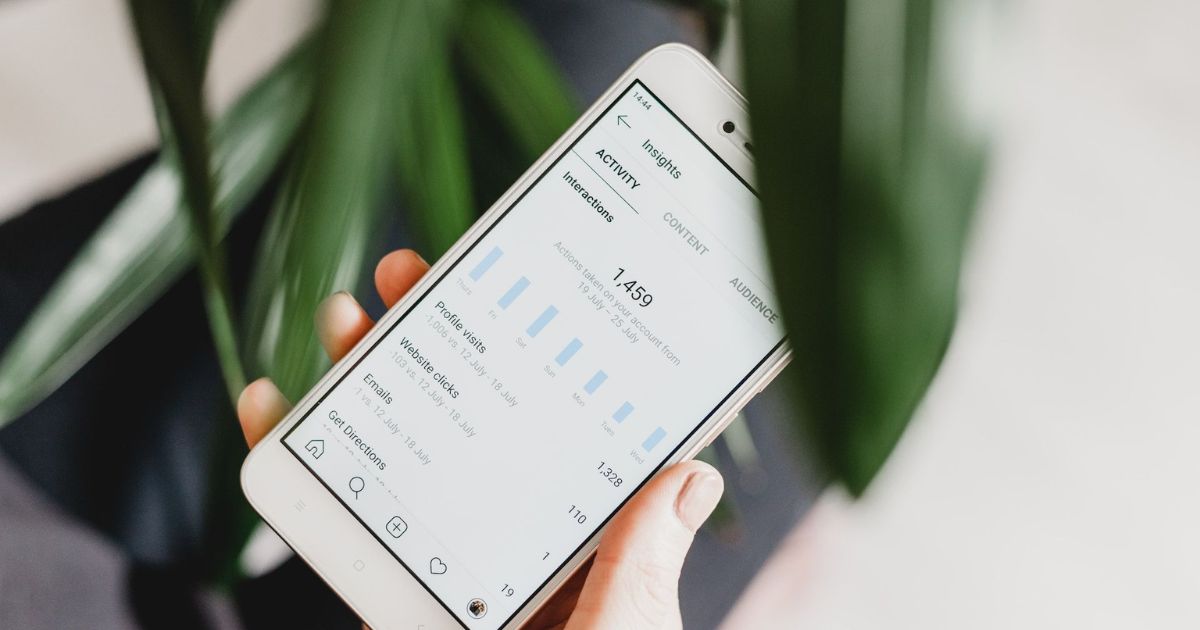In a world where social media reigns supreme, Instagram holds the throne as the go-to platform for sharing and engaging with visual content. But have you ever wondered how your likes are organized? Prepare to have your curiosity satiated as we delve into the intricate algorithms and fascinating factors that dictate the order in which your likes appear. From followers and tagging to the influence of verified accounts, join us on a journey through the data-driven world of Instagram’s like organization.
Key Takeaways
- Instagram’s algorithm analyzes user behavior and interactions, considering factors such as likes, comments, and shares, to determine the order of likes on a post.
- The engagement history between a user and their followers plays a significant role in the like order, with likes from followers who consistently engage with the user’s posts being prioritized.
- Like order on Instagram is important as it provides valuable insights into user preferences and engagement patterns, helps maximize reach and engagement for users and businesses, and indicates the popularity and quality of a post.
- The presence of stalkers in the like list raises privacy and security concerns, as the list can provide valuable information to potential stalkers, revealing interests, preferences, and relationships of users. Instagram should address these concerns by implementing stricter privacy settings and promoting awareness about online safety.
Factors Influencing Instagram’s Like Organization
One of the factors influencing Instagram’s like organization is the algorithm that prioritizes posts based on user preferences and engagement. Instagram’s algorithm is designed to analyze user behavior and interactions to determine the relevance and popularity of posts. This algorithm takes into account various ranking factors such as the number of likes, comments, and shares a post receives, as well as the relationships between users.
The algorithm also considers the relevance of the content to the user’s interests, as determined by their engagement with similar posts and user-generated content. Additionally, the algorithm recognizes the influence of influencers and their impact on engagement. By using audience insights and analyzing data, Instagram is able to organize the likes list in a way that provides users with the most relevant and engaging content, fostering a sense of belonging within the Instagram community.
The Role of Followers in Like Order
The followers of an Instagram user play a crucial role in determining the order of likes on their posts. Instagram organizes likes based on several factors, one of which is the engagement history between the user and their followers. When a user posts a photo or video, Instagram analyzes the list of followers and generates a likers list. This likers list is then ordered based on various considerations, such as the follower’s level of interaction with the user’s content and the mutual followers between the user and the liker.
By prioritizing likes from followers who have consistently engaged with the user’s posts, Instagram aims to enhance the user’s sense of belonging and connection with their audience. This Instagram Post Affect is significant in understanding the importance of like order on Instagram, as it can help users strategize their content and engagement strategies to maximize reach and impact.
Understanding the Importance of Like Order on Instagram
Analyzing the like order on Instagram can provide valuable insights into user preferences and engagement patterns. Understanding how Instagram organizes likes is essential for users and businesses looking to maximize their reach and engagement on the platform. The like order on Instagram is determined by a complex algorithm that takes into account various factors, including the user’s activity, the popularity of the post, and the relationship between the user and the person who posted it.
Here are three reasons why understanding the importance of like order on Instagram is crucial:
- Visibility: The like order determines the visibility of a post on a user’s feed. Posts with a higher number of likes and engagement are more likely to appear at the top, increasing their reach and visibility.
- Social proof: The order of likes serves as social proof, indicating the popularity and quality of a post. Users are more likely to engage with content that has a higher number of likes, perceiving it as valuable and relevant.
- User engagement: Analyzing the like order can help users understand their audience’s preferences, allowing them to tailor their content to increase engagement. By identifying which posts are receiving the most likes, users can gain insight into the type of content that resonates with their followers.
In the next section, we will explore the presence of stalkers in the like list and its implications for user privacy and security.
Exploring the Presence of Stalkers in Like List
An investigation into the presence of stalkers in the like list reveals potential privacy and security concerns for Instagram users. The like list is a section on Instagram where users can see the posts they have liked. While this feature allows users to easily revisit their liked content, it also raises questions about the visibility of these activities to others.
In the context of stalking, the like list can provide valuable information to individuals who may be monitoring someone’s online activities. By exploring a person’s like list, stalkers can gain insights into their interests, preferences, and potentially even their relationships. This raises concerns about privacy and the potential for misuse of this information.
Instagram, as a platform, should recognize the potential risks associated with the presence of stalkers in the like list and take measures to address these concerns. This may involve implementing stricter privacy settings, providing users with more control over their liked content, and promoting awareness about the importance of online safety.
Influence of Recent Tagging on Like Placement
Recent tagging activity has a significant influence on the placement of likes on Instagram. When a user tags someone in their post, it not only increases the visibility of the post but also affects the algorithm that determines the order of likes. Here are three ways recent tagging impacts like placement:
- Increased exposure: By tagging other accounts, the post is more likely to appear in the tagged account’s list of notifications, increasing the chances of it being seen and liked by their followers.
- Enhanced user engagement: Tagging friends or accounts with similar content increases the likelihood of those users engaging with the post by liking or commenting on it, which in turn affects the algorithm’s ranking of the post.
- Improved storytelling: By tagging relevant accounts or sharing stories, users can create a more personalized and engaging experience for their audience, leading to higher likability and visibility of their posts.
Understanding the influence of recent tagging on like placement can help users optimize their content strategy and increase their chances of reaching a wider audience.
Ranking Based on Followers and Verified Accounts
Instagram’s algorithm ranks posts based on the number of followers and verification status of accounts, influencing the visibility and reach of content on the platform. This ranking system plays a crucial role in determining the success of a post, as it determines its position on users’ feeds. The algorithm takes into account the number of followers a user has, with posts from accounts with a larger following being given higher priority.
Verified accounts, which have undergone a process to confirm their authenticity, are also favored in the ranking. The algorithm aims to organize the content in a way that is contextually relevant to each user, ensuring that they see posts from accounts they are likely to engage with. By prioritizing posts from popular and verified accounts, Instagram aims to provide its users with a curated and high-quality feed, tailored to their interests and preferences.
Analysis of Likes for Non-followers or Low Engagement
Only a small fraction of non-followers or accounts with low engagement generate a significant number of likes on Instagram. This raises questions about how Instagram organizes likes and what factors contribute to the visibility and popularity of certain posts. To better understand this phenomenon, let’s delve into the analysis of likes for non-followers or low engagement accounts on the popular social media platform.
- Instagram Stories: Engaging and creative stories tend to attract attention and generate more likes, even from non-followers.
- Business Accounts: Posts from business accounts often receive higher engagement due to their promotional nature and wider reach.
- List of People: If a post is liked by a person who has a large following or is influential, it can result in a chain reaction of likes from their followers.
Instagram’s algorithm strives to create a sense of connection and belonging by showcasing posts that resonate with users’ interests and preferences. Likes serve as a measure of attention and validation, allowing users to feel acknowledged and appreciated in the digital realm. By understanding the factors influencing Instagram likes, users can enhance their own posts and foster meaningful connections with their audience.
Decoding the Meaning of a Number-only Like Display
The analysis of likes for non-followers or low engagement accounts on Instagram prompts the need to decode the meaning behind a number-only like display. Instagram, as a popular social media platform, provides users with engagement metrics to measure the success of their content. However, the number of likes alone does not provide a comprehensive understanding of the impact of a post. To decipher the significance behind a number-only like display, one must consider various factors such as the list of likes, profile visits, and the engagement of mutual connections.
Instagram’s algorithm takes into account other engagement metrics, such as comments and shares, to determine the visibility of a post on users’ feeds. It is important to remember that a blue checkmark or a high number of likes does not necessarily indicate the quality or value of the content. To fully understand the meaning behind likes, one must consider the broader context and user interactions beyond the number displayed.
Frequently Asked Questions
How Does Instagram Determine the Order of Likes on a User’s Post?
Instagram determines the order of likes on a user’s post based on a complex algorithm that takes into account various factors such as recency, engagement, and relevance. This algorithm ensures a personalized and engaging experience for users.
Do Likes From Verified Accounts Carry More Weight in the Like Organization Algorithm?
Likes from verified accounts may carry more weight in Instagram’s like organization algorithm. The algorithm likely takes into consideration factors such as account authenticity and credibility when determining the order of likes on a user’s post.
Can Instagram Detect and Filter Out Likes From Fake or Inactive Accounts?
Instagram has implemented measures to detect and filter out likes from fake or inactive accounts. Their algorithm uses various data points and patterns to identify suspicious activity, ensuring a more accurate representation of engagement and promoting a sense of authenticity on the platform.
Does the Number of Likes Received on a Post Impact Its Visibility on the Explore Page?
The number of likes received on a post does impact its visibility on the explore page. Instagram’s algorithm considers engagement metrics, including likes, to determine the relevance and popularity of a post for wider distribution.
Is There a Limit to the Number of Likes a User Can Receive on a Single Post?
Instagram does not have a limit on the number of likes a user can receive on a single post. The visibility of a post on the explore page is determined by various factors, but the number of likes does play a role in increasing its chances of being featured.
Conclusion
In conclusion, the organization of likes on Instagram is influenced by various factors such as the number of followers, engagement levels, recent tagging, and the presence of verified accounts. The platform utilizes these factors to determine the order in which likes are displayed to users. Additionally, the meaning behind a number-only like display remains ambiguous, leaving room for speculation and interpretation. Ultimately, understanding how Instagram organizes likes can provide insights into user behavior and the platform’s algorithmic processes.











